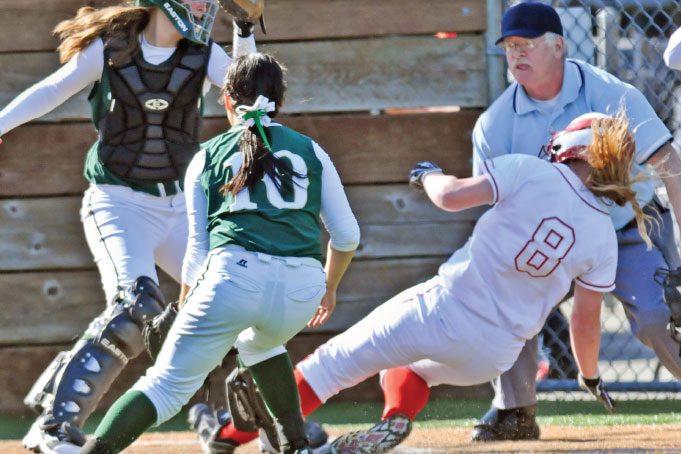As today’s players become quicker, faster and stronger, and as rules adapt, so must umpire mechanics. The wedge mechanic allows the umpire to be fluid and constantly adjust angles to see every aspect of plays at the plate.
It has been a gradual shift in philosophy that has led to the use of the wedge. Years ago, the philosophy dictated umpires get to a set spot, typically the first-base line extended, to be set and watch the play. That eventually adapted to the plate mechanics, which dictated umpires set up at the point of plate, read the play and then adjust to the most advantageous place to see all aspects of the play at the plate. The current mechanic expands upon the point-of-plate mechanics and takes it one step further. Think of a shape of a wedge or a triangle. The two sides of the wedge represent the path of the runner and the flight of the ball. An umpire using the wedge would be in between those two lines to see the point of the play where the tag is applied.
With the change in the obstruction rule came a change in the way coaches teach their fielders to make plays, especially at the plate. Catchers will typically set up with their left foot next to the top left corner of the plate until they catch the ball. Runners typically slide to the back portion of the plate to avoid the tag. With those changes, there are more and more swipe tags at the plate as opposed to the traditional blocking of the plate and runner sliding in.
With the increase in swipe tags, the traditional first-base line extended position of the umpire no longer made sense. The old position did not allow umpires to see the tag, unless they were right on top of the play looking down, which would put them in a dangerous path. By utilizing the new wedge mechanic, umpires can now get a clear view of all the elements on a play — the runner, the fielder, the ball and the glove. It allows umpires to get a clear view of the fielder to determine if she has blocked the entire base or path of the runner, resulting in obstruction. It also gives them the best look at the swipe tag.
In order to work the wedge effectively and properly see the swipe tag, umpires must stay between the catcher and the runner. Umpires must never let the runner get in between or they will be screened from seeing the tag. That means the umpire must always be prepared to move and adjust. As the catcher moves into fair territory, the plate umpire must move as well to keep the angle. The same is true if the catcher moves into foul territory. On passed balls, the best position may be in fair territory in order to see all the elements of the play. One static, stationary position is no longer recommended as plays continually develop and no two plays are the same.
It is imperative that umpires get into the best position possible to see the entire play. They must be able to read the catcher and the runner and keep the ball and tag in clear view at all times. Plays at the plate can determine the outcome of the game and the last thing any umpire wants to do is guess at a tag. Using the wedge allows umpires to move and adjust and puts them into the best possible position to get the call right, which is ultimately the goal.
What's Your Call? Leave a Comment:
Note: This article is archival in nature. Rules, interpretations, mechanics, philosophies and other information may or may not be correct for the current year.
This article is the copyright of ©Referee Enterprises, Inc., and may not be republished in whole or in part online, in print or in any capacity without expressed written permission from Referee. The article is made available for educational use by individuals.
















